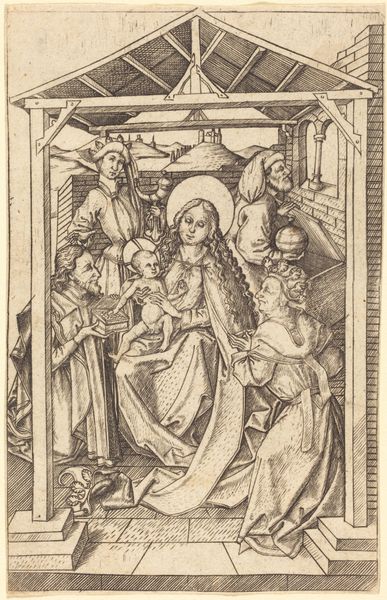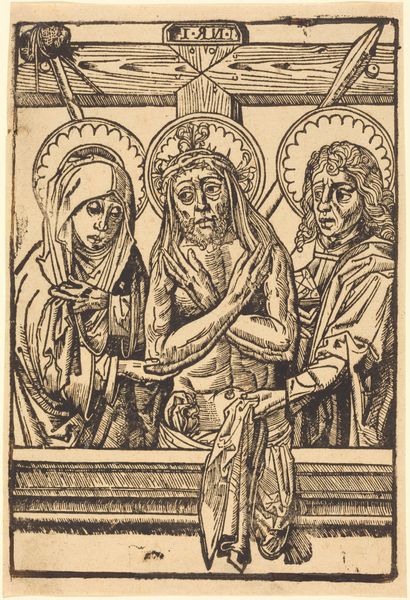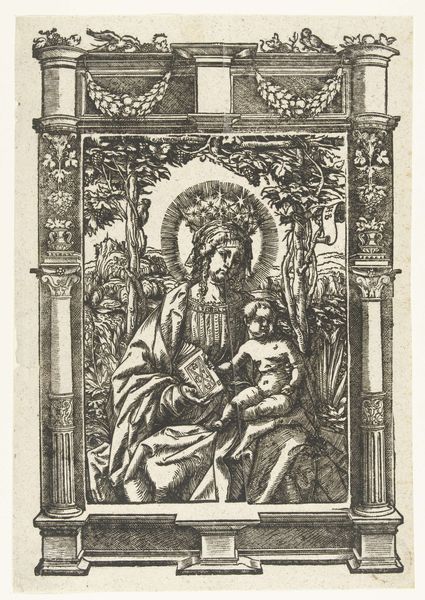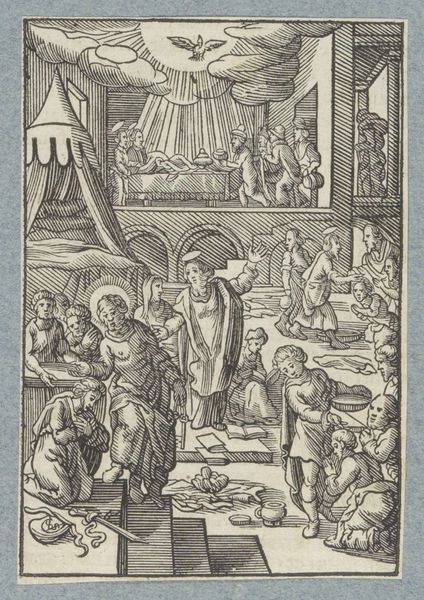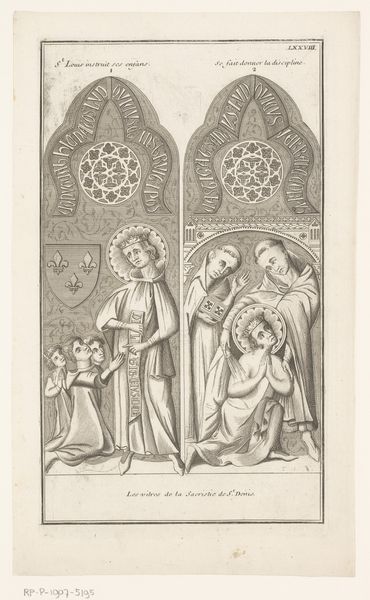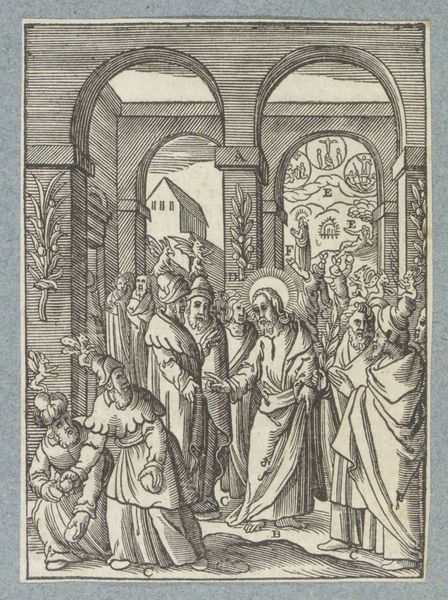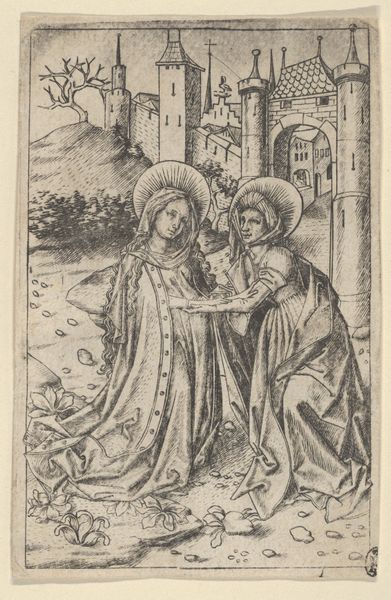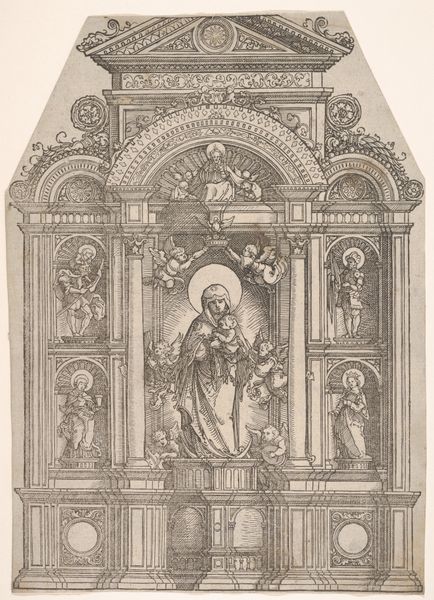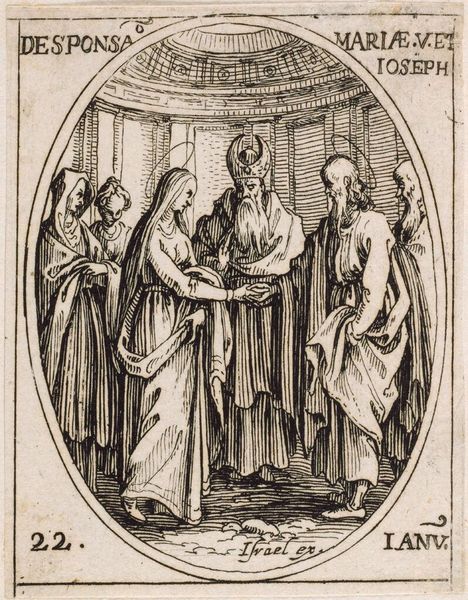
Heilige troost een zittende bisschop en wordt ten grave gelegd 16th century
0:00
0:00
drawing, print, engraving
#
drawing
#
narrative-art
# print
#
pen illustration
#
pen sketch
#
figuration
#
ink line art
#
pen-ink sketch
#
line
#
pen work
#
sketchbook drawing
#
history-painting
#
northern-renaissance
#
engraving
Dimensions: height 126 mm, width 120 mm
Copyright: Rijks Museum: Open Domain
Curator: Look at this intriguing 16th-century print, “Heilige troost een zittende bisschop en wordt ten grave gelegd”, made with engraving techniques, signed by the Monogrammist TB. The intricate lines depict a holy scene of consolation with a burial in the background. Editor: It feels like a memory unfolding. The composition is incredibly linear, the kind of piece that makes you feel like you're looking at someone else’s dream journal. The tiny marks are fascinating. Curator: Indeed. Consider how printmaking allowed for mass production. This wasn't about unique art objects for the elite but devotional images reaching a wider audience, standardizing religious narratives. Note the buildings – how their ornamentation echoes contemporary architecture, speaking directly to the cultural moment of the engraver's time. Editor: Yes, the setting definitely situates the religious experience in the every day. And it does that almost childlike desire for order, the way the pattern wants to fill every available bit of space, giving me feelings of warmth in my hearth. What materials where likely used? The work must have had to involve the handling of various etching materials… Curator: Very likely so, considering this sort of printmaking would involve engraving copper plates with burins and then inking. A painstaking manual process resulting in hundreds of copies. Its reliance on readily available metal and ink situates its accessibility for dissemination. I love what it shows about consumption culture during that period. Editor: I am drawn to that bishop's gesture – a gentle touching of his head as if troubled by earthly concerns as well as spirituality. Makes you wonder what a bishop did with his day, huh? The sketch incites narratives! Curator: The bishop here embodies authority and theological wisdom. What could be read into the body of the bishop as representing institutions when it relates to the social and cultural functions and roles during its era? It reflects also how hierarchies of production manifested back then as well... Editor: I appreciate you putting things into the language and lens of the making; for me it has also some unnamable feelings. Curator: I’ve looked closely at the material conditions. Both analyses enrich how we approach and think about such objects, offering varying routes into history! Editor: Yeah, it has something for the historian, and it has something that transcends any period.
Comments
No comments
Be the first to comment and join the conversation on the ultimate creative platform.
